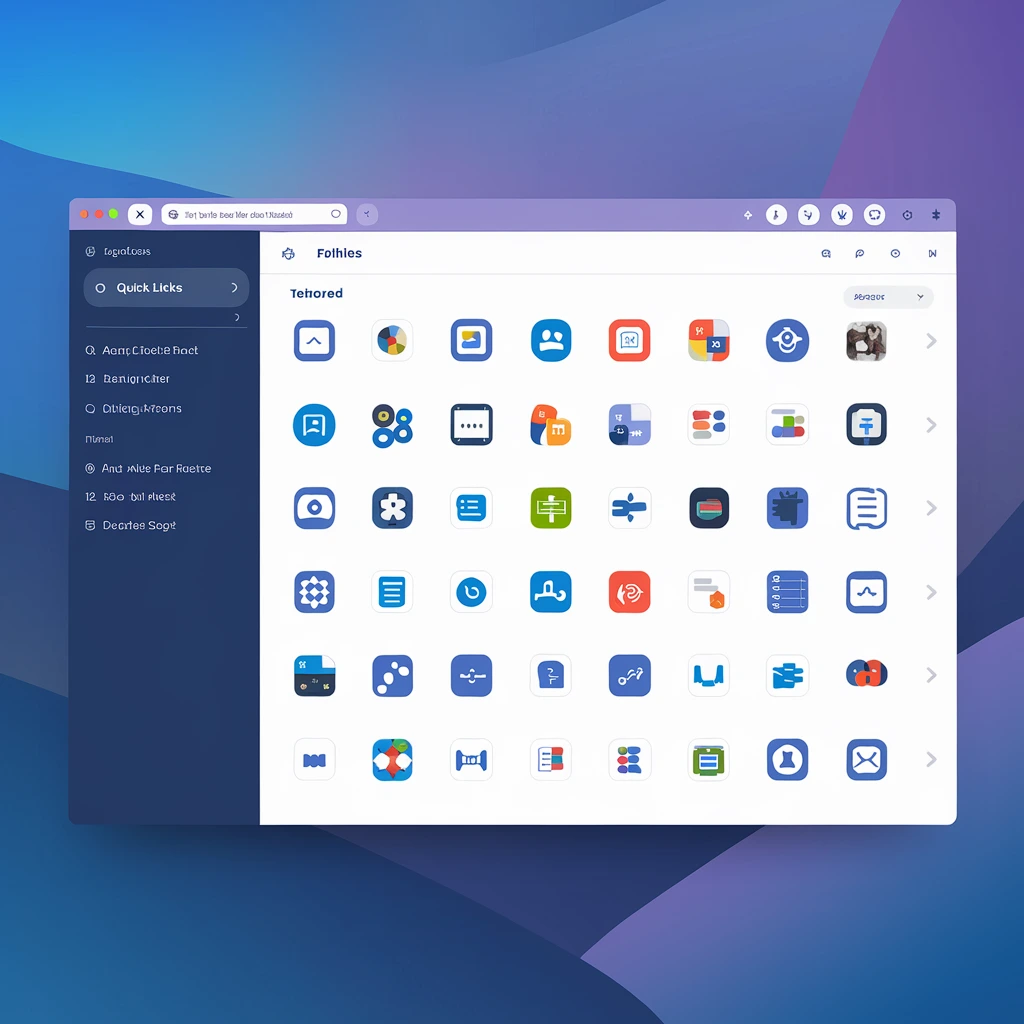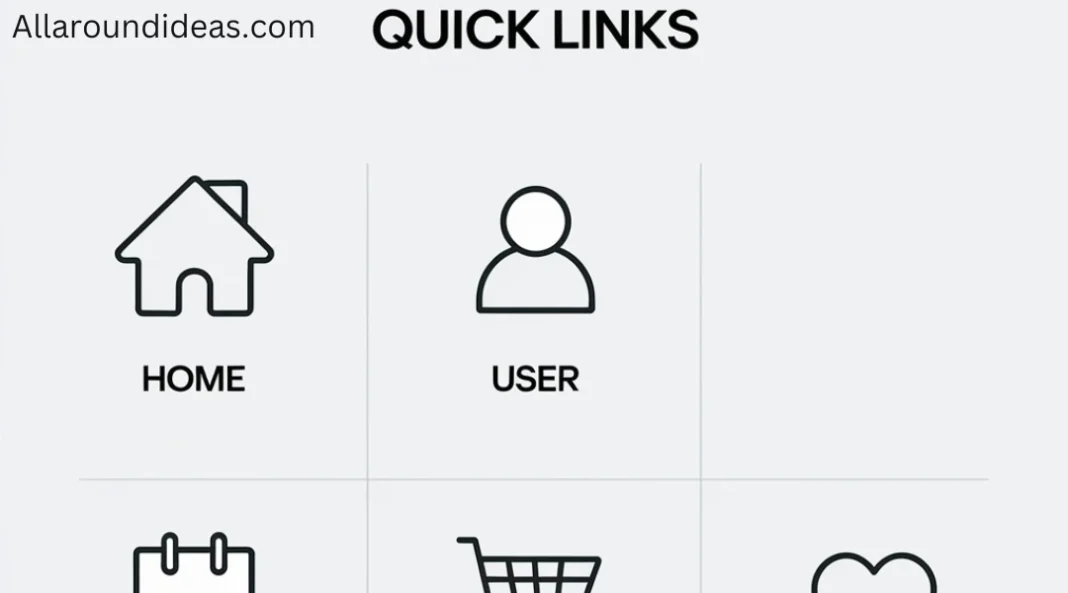Introduction
Now a days in the landscape of the internet, ease of navigation is crucial. This is where “Quick Links” come in a seemingly simple yet powerful tool to improve user experience on websites and within applications. They are prominently placed links or buttons that give users direct access to essential content or commonly used features without needing to navigate through multiple pages. For businesses, content creators, and app developers, implementing them effectively can drive engagement, enhance user satisfaction, and improve website metrics.
This article explores what Quick Links are, their benefits, best practices for implementing them, and examples of how they can be utilized across different platforms to maximize efficiency.
What Are Quick Links?
Quick Links are navigational tools designed to provide shortcuts to frequently visited pages or essential content on a website or application. They are typically located on the homepage or in highly visible areas to help users find information quickly. For example, on an e-commerce website, They might direct users to sections like “Best Sellers,” “New Arrivals,” “Customer Service,” or “Order Tracking.”
In mobile applications, they might include one-tap options for accessing “My Account,” “Settings,” “Notifications,” or “Help.” The idea is to streamline navigation, reduce the time spent searching for specific pages, and ensure that users can easily reach critical information.

If you want some information about Putnam Investments, then take a look at our previous blog post.
Benefits of Using Quick Links
Quick Links provide several advantages for both users and website owners. Here’s a closer look at their key benefits:
1. Improved User Experience
Quick Links make it easy for users to access high-priority content with minimal effort. Users prefer websites that are intuitive and simple to navigate, especially when they have a specific goal in mind. They improve the overall user experience by reducing the number of clicks or taps needed to reach their destination, which can increase satisfaction and engagement.
2. Increased Engagement and Conversion Rates
When users can quickly find what they need, they are more likely to engage further with the site, resulting in better metrics, such as average time on site, pages per visit, and conversions. For instance, e-commerce sites can use them to direct customers to sales or exclusive offers, which can lead to higher sales.
3. SEO Benefits
While Quick Links are mainly a user-focused tool, they can indirectly support SEO. By enhancing site structure and making it easier for both users and search engines to navigate, They can improve the site’s crawlability and indexing, which are factors search engines consider for ranking.
4. Reduced Bounce Rates
Providing Quick Links to the most popular or essential sections of your site can reduce bounce rates. When users arrive on a website and immediately find what they’re looking for, they are less likely to leave quickly (a behavior referred to as “bouncing”). Lower bounce rates signal to search engines that users find the site valuable, which can further improve its ranking.
5. Efficient Mobile Navigation
On mobile devices, where space is limited and navigation can be more challenging, These Links are particularly valuable. They provide shortcuts to important sections without requiring users to navigate through several layers of menus. This makes them a critical component of a mobile-friendly design.
Best Practices for Implementing Quick Links
To be effective, Quick Links should be designed and implemented thoughtfully. Here are some best practices to follow:
1. Prioritize Essential Content
Identify the most important or frequently accessed content on your site, and use Quick Links to direct users there. The homepage should have links to top categories, services, or sections that most users want to access quickly.
2. Maintain Consistent Placement
Users become accustomed to finding navigation tools in certain areas. Consistency in the placement of these Links improves usability, as users can quickly recognize where to find them. For example, placing them in the header, footer, or sidebar is a common approach.
3. Use Clear and Descriptive Labels
The text or icon used for each Quick Link should be clear and easy to understand. Use descriptive labels that clearly convey the purpose of the link. For instance, labels like “My Account,” “Help Center,” and “Order History” provide clear direction.
4. Limit the Number of Quick Links
While Quick Links are helpful, too many can overwhelm users and clutter the interface. Limit them to the most valuable or popular options. Striking a balance between providing enough choices without overwhelming the user is key.
5. Optimize for Mobile
On mobile devices, These Links should be easily accessible and large enough to tap accurately. For example, a mobile site might feature a prominent set of these Links at the top or bottom of the screen, so users can quickly reach popular sections.
6. Update Quick Links Regularly
Regularly review the usage of your Quick Links and update them as necessary. Trends in user behavior can change over time, so it’s essential to ensure your Links remain relevant and provide access to the most sought-after content.
Examples of Effective Quick Links
Many successful websites and apps use Quick Links to enhance the user experience. Below are a few examples:
1. E-commerce Sites
Retailers like Amazon and Walmart use these Links on their homepage to direct users to key sections like “Today’s Deals,” “Best Sellers,” “New Arrivals,” and “Gift Cards.” These links are often updated based on seasonal trends, helping users find popular items easily.
2. Financial Service Websites
Banks and financial service providers often have the Links to “Login,” “Customer Support,” “Account Services,” and “Loan Applications.” These links help customers find essential services quickly, improving satisfaction and retention.
3. Social Media Platforms
Social media platforms like LinkedIn and Facebook offer these Links to sections like “Messages,” “Notifications,” “Settings,” and “Profile.” These links streamline navigation within complex apps and ensure users can access important features with minimal hassle.
4. Educational Websites
On educational websites or online learning platforms, Quick Links often lead to resources like “Course Catalog,” “Library,” “Assignments,” and “Student Support.” This allows students to find necessary information quickly and focus on their studies without getting lost in site navigation.

If you want some information about Putnam Investments, then take a look at our previous blog post.
Challenges and Limitations
While Quick Links are beneficial, they also come with a few limitations. Over-reliance on these Links can make site navigation too dependent on a single pathway, potentially frustrating users who prefer exploring other site areas. Additionally, having too many Links may lead to clutter, which can degrade the user experience. For larger or content-heavy sites, a more sophisticated navigation structure may be necessary to complement Quick Links.
Conclusion: Why Quick Links Are Essential for Modern Websites
Quick Links are a powerful tool for improving website navigation, increasing engagement, and supporting SEO efforts. By providing direct access to essential content, Links make it easier for users to find what they need, which can lead to longer visits, higher conversions, and greater satisfaction.
Implementing Quick Links thoughtfully, with attention to prioritizing content, clear labeling, and mobile optimization, can make a website or application significantly more user-friendly. For any organization aiming to improve digital user experience, Quick Links should be a priority feature in design and development. While they are not the only solution for effective navigation, Quick Links can play a key role in creating a seamless, intuitive, and efficient experience for users across all devices.


